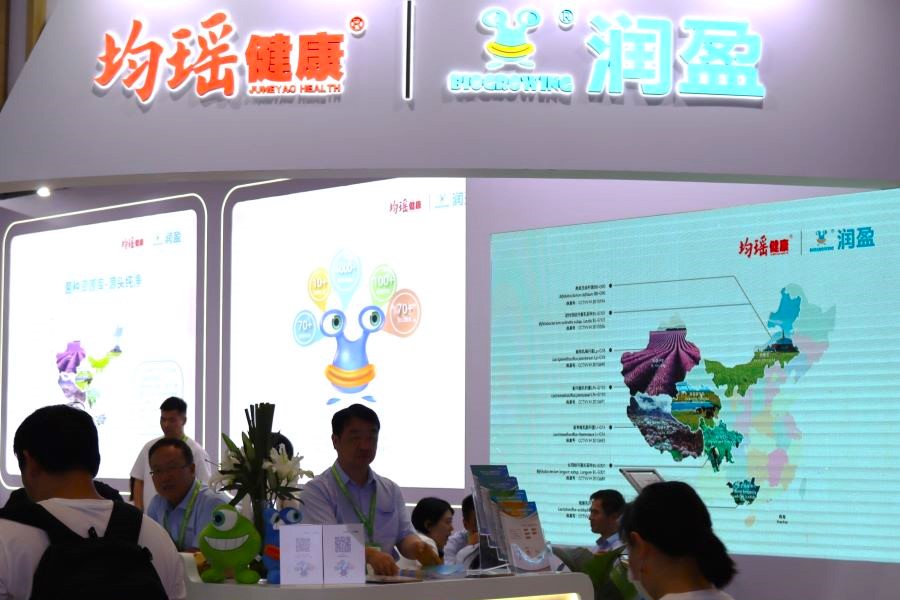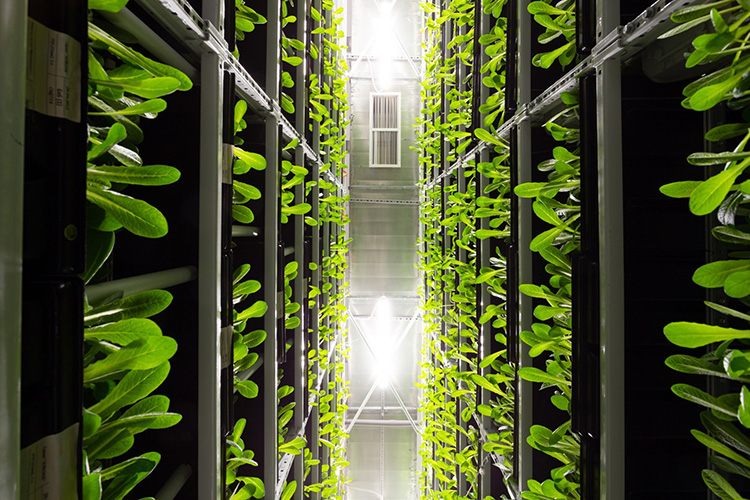Report on Element-Doped Biochar for Soil Remediation and Sustainable Development
1.0 Introduction: The Global Challenge of Soil Contamination
Heavy metal contamination of agricultural soils by elements such as cadmium, lead, chromium, and arsenic presents a significant threat to global food security and public health. This issue directly impedes progress on several Sustainable Development Goals (SDGs), including SDG 2 (Zero Hunger), SDG 3 (Good Health and Well-being), and SDG 15 (Life on Land). Contaminants, introduced via industrial wastewater, fertilizers, and manure, accumulate in the food chain, posing severe health risks. A recent review published in Agricultural Ecology and Environment examines element-doped biochar as a promising technology to address this challenge and advance sustainable agricultural practices.
2.0 A Sustainable Solution: Element-Doped Biochar
The proposed strategy involves the use of element-doped biochar, a charcoal-like material derived from agricultural residues. This approach aligns with SDG 12 (Responsible Consumption and Production) by converting waste into a high-value product, thereby promoting a circular economy. While standard biochar is a recognized soil amendment, its efficacy in immobilizing heavy metals is limited. By “doping” the biochar with specific elements, its chemical structure is modified to enhance its capacity for capturing and neutralizing toxic metals in soil.
2.1 Mechanisms of Action
The doping process introduces active chemical groups onto the biochar’s surface, creating additional binding sites for heavy metal ions. This improved immobilization capability is crucial for restoring soil health (SDG 15) and ensuring the production of safe food (SDG 2). The mechanisms vary by dopant:
- Nitrogen-doped biochar: Introduces nitrogen groups that form stable bonds with metals like cadmium.
- Oxygen-doped biochar: Increases the presence of carboxyl and hydroxyl groups, which effectively attract lead and chromium.
- Sulfur-doped biochar: Utilizes sulfur-metal interactions to bind mercury and cadmium.
- Phosphorus-doped biochar: Serves a dual purpose by immobilizing toxic metals while also supplying essential plant nutrients, further supporting sustainable agriculture.
3.0 Contribution to Sustainable Development Goals (SDGs)
The application of element-doped biochar offers a multi-faceted approach to achieving the 2030 Agenda for Sustainable Development. Its implementation directly supports the following goals:
- SDG 2 (Zero Hunger): By decontaminating farmland, the technology enhances soil productivity and ensures the safety of crops, contributing to food security and sustainable agriculture.
- SDG 3 (Good Health and Well-being): It mitigates the risk of human exposure to toxic heavy metals through the food chain, preventing chronic health conditions such as kidney damage and cancer.
- SDG 12 (Responsible Consumption and Production): The technology exemplifies circular economy principles by upcycling agricultural waste into a functional material for environmental remediation.
- SDG 15 (Life on Land): It provides a practical tool for remediating polluted soils, helping to halt and reverse land degradation and protect terrestrial ecosystems.
4.0 Field Application and Future Recommendations
Field studies have demonstrated the effectiveness of element-doped biochar in reducing the leaching of lead and cadmium and improving crop growth by mitigating metal toxicity stress. These results confirm its potential as a scalable tool for sustainable agriculture.
4.1 Recommendations for Future Research
To optimize this technology for widespread adoption, further research is recommended in the following areas:
- Conducting long-term trials to assess the stability and performance of doped biochar under diverse agricultural conditions.
- Investigating multi-element doping strategies to create biochar capable of targeting a broader range of contaminants simultaneously.
The continued development of this technology represents a significant step toward transforming contaminated land into safe, productive agricultural systems, thereby ensuring both environmental sustainability and global food security.
Analysis of Sustainable Development Goals in the Article
1. Which SDGs are addressed or connected to the issues highlighted in the article?
The article on element-doped biochar for decontaminating agricultural soils addresses several interconnected Sustainable Development Goals (SDGs). The analysis identifies the following primary SDGs:
- SDG 2: Zero Hunger: The core issue is the contamination of agricultural soils, which directly impacts food safety and security. The article emphasizes making “farmland safer and crops healthier” to ensure food is safe for consumption.
- SDG 3: Good Health and Well-being: The article explicitly links heavy metal contamination in the food chain to severe human health risks, including “kidney damage, osteoporosis, and even cancer.” The proposed solution aims to mitigate these health threats.
- SDG 12: Responsible Consumption and Production: The technology described promotes a circular economy by “turning agricultural waste into high-value soil amendments.” This involves recycling materials like “rice husks or fruit peels” to create biochar, thus reducing waste and pollution.
- SDG 15: Life on Land: The article focuses on protecting and restoring terrestrial ecosystems, specifically agricultural soils. The problem of soil pollution by heavy metals is a form of land degradation, and the use of biochar is a method to “transform contaminated farmland into safe, productive soils.”
2. What specific targets under those SDGs can be identified based on the article’s content?
Based on the specific issues and solutions discussed, the following SDG targets are directly relevant:
- Target 2.4 (under SDG 2): By 2030, ensure sustainable food production systems and implement resilient agricultural practices that increase productivity and production, that help maintain ecosystems, that strengthen capacity for adaptation to climate change, extreme weather, drought, flooding and other disasters and that progressively improve land and soil quality.
- Explanation: The article’s focus on using biochar to neutralize toxic metals and improve soil health is a direct effort to improve soil quality and make agricultural practices more sustainable and resilient against chemical contamination.
- Target 3.9 (under SDG 3): By 2030, substantially reduce the number of deaths and illnesses from hazardous chemicals and air, water and soil pollution and contamination.
- Explanation: The article highlights that heavy metals like “cadmium, lead, chromium, and arsenic” accumulate in crops and “threaten human health.” The entire purpose of using element-doped biochar is to reduce soil contamination and, consequently, human exposure to these hazardous chemicals through the food chain.
- Target 12.5 (under SDG 12): By 2030, substantially reduce waste generation through prevention, reduction, recycling and reuse.
- Explanation: The article describes biochar as a material “made from crop residues such as rice husks or fruit peels.” This process is an example of recycling agricultural waste, turning it into a useful product and supporting a “circular economy,” which directly aligns with this target.
- Target 15.3 (under SDG 15): By 2030, combat desertification, restore degraded land and soil, including land affected by desertification, drought and floods, and strive to achieve a land degradation-neutral world.
- Explanation: Heavy metal pollution is a significant form of soil degradation. The article presents element-doped biochar as a technology to remediate this issue, aiming to “transform contaminated farmland into safe, productive soils,” which is a form of land restoration.
3. Are there any indicators mentioned or implied in the article that can be used to measure progress towards the identified targets?
The article implies several indicators that can be used to measure progress towards the identified targets:
- For Target 2.4 & 3.9:
- Indicator: Reduction in the concentration of heavy metals (e.g., cadmium, lead) in agricultural soils and crops. The article states that the technology helps “lock contaminants in the soil and reduce their mobility,” and field applications have “reduced lead and cadmium leaching in soils.”
- Indicator: Improvement in crop health and growth. The text mentions that some biochar applications “demonstrated enhanced crop growth by lowering metal toxicity stress.”
- For Target 12.5:
- Indicator: Volume of agricultural waste (e.g., rice husks, fruit peels) converted into biochar. The article’s premise of “turning agricultural waste into high-value soil amendments” implies that measuring the amount of waste recycled is a key metric of success.
- For Target 15.3:
- Indicator: Area of contaminated agricultural land restored to productive use. The goal to “transform contaminated farmland into safe, productive soils” suggests that progress can be measured by the amount of land that is successfully decontaminated and made safe for agriculture.
Table of SDGs, Targets, and Indicators
| SDGs | Targets | Indicators |
|---|---|---|
| SDG 2: Zero Hunger | Target 2.4: Ensure sustainable food production systems and improve land and soil quality. |
|
| SDG 3: Good Health and Well-being | Target 3.9: Substantially reduce illnesses from soil pollution and contamination. |
|
| SDG 12: Responsible Consumption and Production | Target 12.5: Substantially reduce waste generation through recycling and reuse. |
|
| SDG 15: Life on Land | Target 15.3: Restore degraded land and soil. |
|
Source: eurekalert.org







